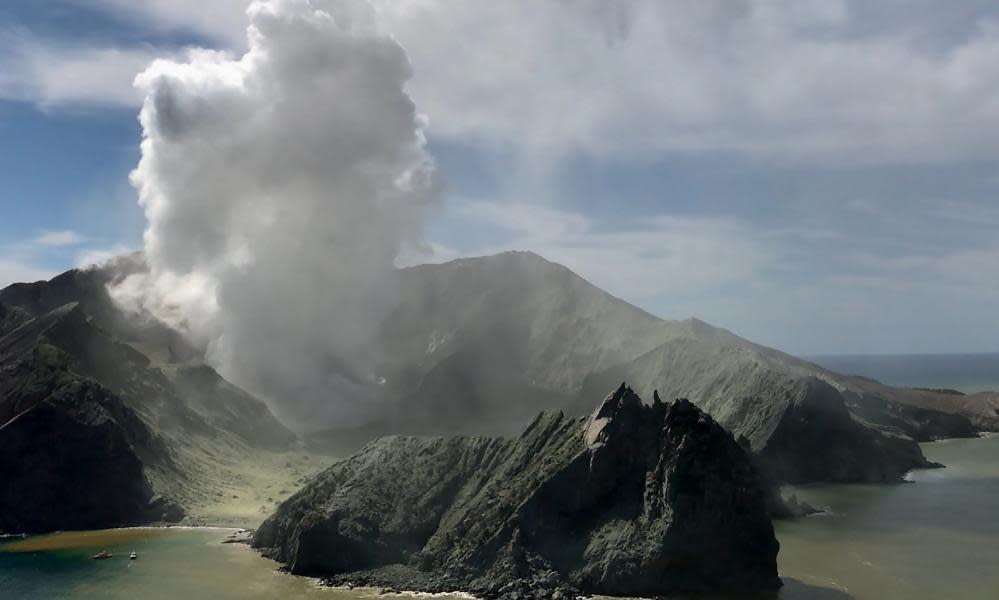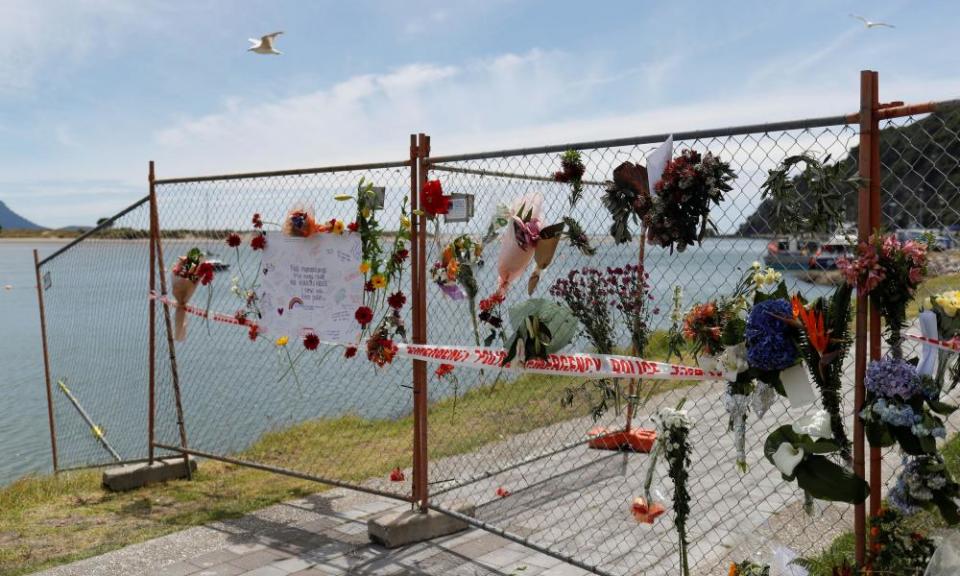White Island eruption: 'too unsafe' to retrieve bodies as volcanic activity rises

New Zealand police have vowed to return to White Island as soon as possible to retrieve the bodies of eight tourists who died there, as the first Australian victims of the fatal volcanic eruption were named.
Wednesday dawned clear and calm in Whakatāne, but still police efforts to reach the island were hampered after volcanic activity substantially increased, making it too dangerous for disaster victim identification officers to land.
In a small victory, police managed to conduct four flyovers of the island with a drone, but their cautious response is drawing the ire of locals in the Bay of Plenty, who hold simmering resentments that more people weren’t rescued in the aftermath of the eruption, and those that were saved was largely due to local helicopter pilots who ignored official warnings to stay away.
“They should go and get them back now,” said Maree Heke, 47, a local musician.
“They’re taking too long. And then they should close that island off to all tourists.”
As victim’s families grow increasingly anxious about when their loved ones will be come home, police deputy commissioner John Tims promised his officers wouldn’t rest till the bodies were returned, displaying an emblazoned authority that has largely been absent from officials in the days following the disaster.
“Our number one priority is to return to the island and recover those bodies,” he said emphatically, saying he would give families his “promise” to return their kin.
The identities of several victims began to emerge on Wednesday. Gavin Dallow, from Adelaide, was named by his family as one of the dead. The body of his 15-year-old step-daughter Zoe Hosking is believed to still be on the island.
Gavin’s father, Brian Dallow, praised his son as “a person who was always interested in helping other people” and enjoyed a range of sports. He said Gavin was the kind of person who “if he’d known there was a danger he wouldn’t have gone”.
“At Christmas we’re really going to miss him.”
A family statement said: “Our hearts break at the loss of Zoe at such a young age. We know her loss will also devastate her school community and the local Girl Guides, of which she was an active member.”
A Brisbane mother and daughter, Julie Richards, 47, and 20-year-old Jessica, who were passengers on Ovation of the Seas, were also confirmed by family members to have died.

John Mickel, a friend of the Richards’, said the family was “united in grief”.
Police also named Krystal Browitt, Richard Elzer and Karla Matthews as among the missing from Australia and Tipene Maangi and Hayden Inman from New Zealand, both of whom worked for White Island Tours.
The Australian Defence Force arrived late on Wednesday to 10 injured Australians to hospitals in NSW and Victoria and had already sent medical supplies to New Zealand, including one sqaure metre of human skin, to help treat burns victims.
Related: New Zealand helicopter pilot describes horror of volcano rescue
As the names of some of the deceased emerged, New Zealand activated its burn disaster national response plan for the first time ever. 30 White Island victims remain in six hospitals around the country, with 25 in a critical condition and 22 requiring round-the-clock breathing assistance.
The ministry of health said 120 square metres of skin had been purchased from the US to treat victims, and it was likely more people would die from their severe and complex injuries, despite operating theatres working around the clock.
Dr Peter Watson, the Counties Manukau chief medical officer said: “The nature of the burns suffered is complicated by the gases and chemicals in the eruption.”
As criticism of police’s lethargic response mounted from locals, a scientist from GNS Science, Graham Leonard backed up their decision not to return to the island, saying conditions were worsening and it would be challenging for people to breathe, see or walk on the disaster site.
Leonard said the risk of another eruption like Monday’s had susbtantially increased and there was now a 40-60% chance of one in the next 24 hours.
As families were beginning to arrive from overseas to Whakatāne, aided by cheap flights from Air New Zealand and fast-tracked consular support, they were being looked after by police family liason officers, and local Iwi.
Paul Quinn, the chair of White Island tours, said iwi were “wrapping the necessary support around affected families and staff, all of whom are understandably distraught”, and support care packages were being put together for those families as they await news on the recovery mission.
“There are many questions that are left to be answered but our priority at this time is on the welfare of those affected,” Quinn said in a statement.

White Island’s alert level remains at three (out of five) and volcanologist Craig Miller said volcanic gas pressures remained high.
“The situation remains highly uncertain as to future activity.”
Related: 'I don't have any hope': Whakatāne mourns after White Island eruption
As the wait for the recovery mission lengthens, local people in the Bay of Plenty expressed frustration at the multiple delays and the lack of information from police, including any discussion of the details of the recovery plan or how long it would take.
“Let’s stop talking about it and do it,” says Ben Smith, 44, a local orchard worker. “I think they are over-rationalising it. You have to take that information from all the scientists into account but also listen to the locals. They know the island and the weather as good as anyone.”
Some likened the situation in Whakatāne to the Pike River Mine disaster in Greymouth in 2010. The bodies of 29 miners remain entombed in the mine nine years after a blast in the mine.
“I’m old school and it’s been frustrating me,” said BJ Hawthorn, 51, a bobcat driver. “This country has got extremely PC and out of control when it comes to worksafe conditions. Just go and get them. I know guys in the fire brigade here who just want the opportunity to go and get them. If there’s a car on fire you don’t wait until someone puts road cones around it.”
Some in the town said they think tourists should never have been allowed on White Island – and never should be again. Hinepare Tawa, 32, a local mother-of-four said: “My belief is that Whakaari is a living being, an ancestor, and I don’t believe she is a person to be disturbed. If the island was closed I wouldn’t be too worried about it because I really have a problem with capitalising on nature”.”

 Yahoo News
Yahoo News 
